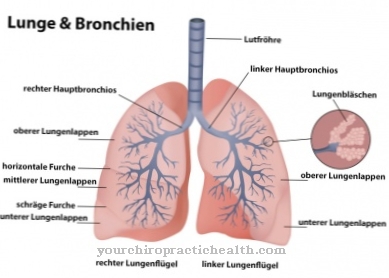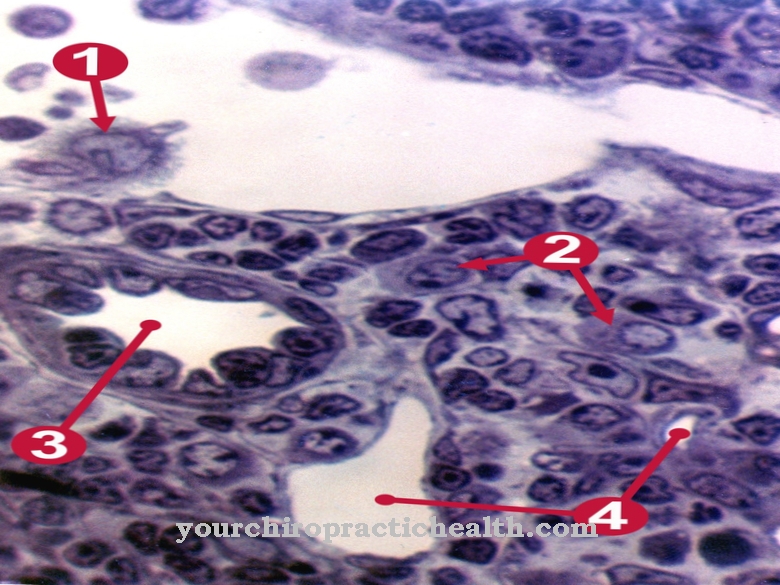In which limbic system it is a functional unit in the brain that is responsible for processing emotions. It is made up of several parts of the brain that work closely together. Illnesses can cause serious symptoms and should be treated promptly.
What is the Limbic System?
The limbic system includes areas of the brain that are in close contact. The term limbic system is historically shaped and sometimes controversial among scientists. Nevertheless, it has meanwhile been proven that the elements are important in the processing of information, emotions and memories. Which structures participate in the processes, however, has not yet been fully clarified. Instead, the anatomical structure partly differs depending on the person describing it.
While the limbic system used to be responsible for processing emotions and memories, scientists nowadays tend to assume that it is not just the limbic system that is responsible for such processes. The processes are much more considered a product of the cooperation of several elements. Accordingly, there is no uniform definition of the limbic system. The only thing they have in common is the importance of the tasks that are carried out as part of these processes.
Anatomy & structure
From an anatomical point of view, it can be assumed that the limbic system is ring-shaped in the brain, enclosing the basal ganglia and thalamus. Furthermore, the limbic system is divided into the following components: hippocampus, fornix, corpus mamillare, gyrus cinguli, corpus amygdaloideum (almond nucleus), parts of the thalamus, gyrus parahippocampalis, septum pallucidum. The hippocampus is double, it exists in both the left and right hemispheres of the brain and, from an evolutionary point of view, belongs to the oldest elements of the brain. It can be located in the temporal lobe.
The fornix connects the hippocampus and the corpus mamillare. In the middle of the cerebral legs, on the underside of the brain, is the corpus mamillare. The cingulate gyrus, on the other hand, represents an inner part of the brain. Its course follows from the front part to the rear. On the micro level, different cells become clear, through which the cingulate gyrus can be differentiated into two parts within the limbic system. The amygdaloid corpus sits in the temporal lobe. The individual elements of the limbic system have different tasks and complement each other.
Function & tasks
The limbic system is responsible for processing emotions and drives. It recognizes and processes new stimuli and is a component of a functioning memory and memories. At the same time, it regulates the autonomic nervous system and sensory stimuli such as pain or odors, which are transmitted to the brain in the form of stimuli via nerve pathways from other regions of the body. For a smooth process, the limbic system works closely with nerve cells in the cerebral cortex in the form of an intensive exchange of information. This enables him to develop emotions and drives as well as to store events and other elements. In this way, the limbic system also manages to process intellectual performance.
The different components also take on different tasks. The hippocampus ensures that information from short-term memory is transferred to long-term memory and can therefore be accessed. While old information only has to be processed, the hippocampus prepares new impressions for storage. The hippocampus and fornix work closely together in this regard. The corpus amygdaloideum is responsible for the development of feelings of fear and the evaluation of all information. The cingulate gyrus takes care of spatial memory. In this area, various impulses are weighed up, which are ultimately followed by an action. The stimuli are in opposition to each other, from which a decision regarding an action must result. Thus, the limbic system is not an organ, but a complex interplay of different elements in the brain.
Diseases
In view of the important tasks of the limbic system, disorders and complaints are often serious. The nature of the symptoms depends on the region of the problem. For example, people with a defective amygdaloid corpus may show a lack of fear. A loss of fearful sensations can have consequences if those affected no longer perceive the natural warning and defense reactions in dangerous situations. Damage in this region can lead to depression, phobias, memory disorders and autism. Disorders in the hippocampus, on the other hand, trigger Alzheimer's disease. In the course of the disease, important nerve cells die. In addition to memory and orientation disorders, there are difficulties with language skills as well as with thinking and forming adequate judgments.
Changes in the elements of the limbic system are possible organic causes of schizophrenia and other personality changes. In such a case, there is reduced activity in the frontal lobe, which in turn means that fear and emotions are not processed properly. In addition, changes in the limbic system can cause bipolar disorder. This is part of affect disorders and is increasingly known to many people under the term manic-depressive illness. Staggered in phases of different length, depression and euphoria alternate. The diseases in the limbic system are therefore very diverse. As soon as the complex interaction of the elements is disturbed, the tasks can no longer be carried out properly. Instead, there are complaints, some of which cannot be treated.
You can find your medication here
➔ Medicines against memory disorders and forgetfulnessTypical & common diseases
- depressions
- phobia
- Memory lapses
- autism
- Alzheimer
- schizophrenia
- Bipolar disorder





.jpg)






.jpg)



.jpg)










.jpg)
